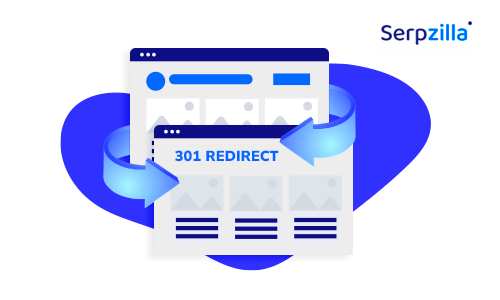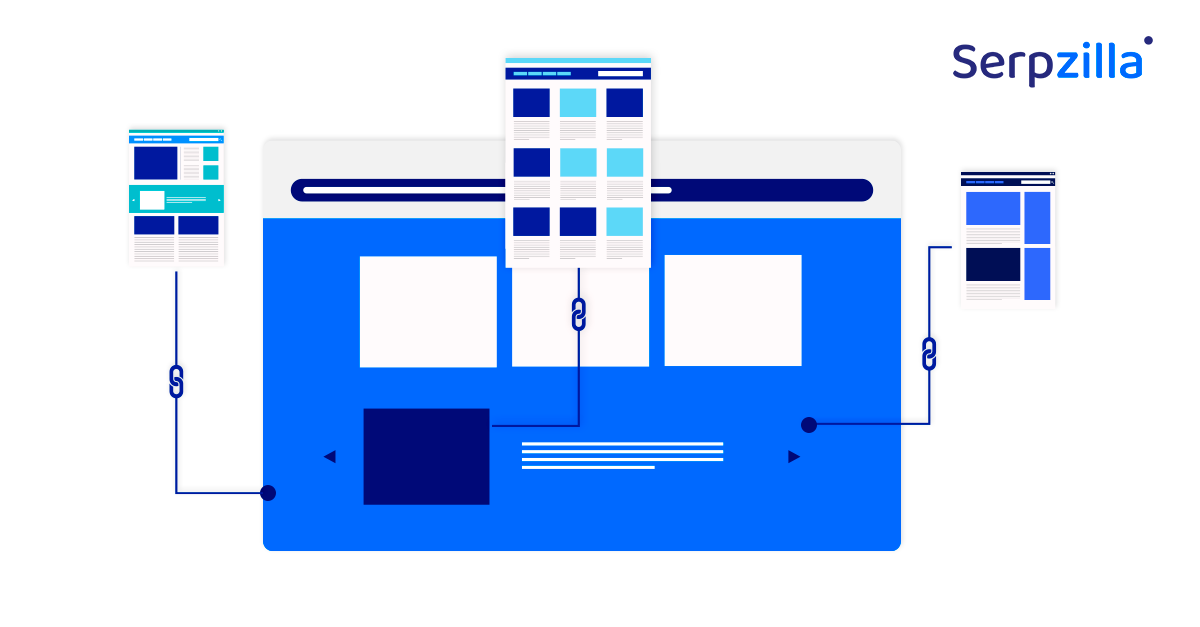In 2011, retail giant J.C. Penney faced a Google penalty. The company had hired an outside agency that used manipulative SEO tactics such as building a network of paid links from irrelevant and low-quality websites to boost search engine rankings. This violation of Google’s guidelines was exposed in a New York Times article, leading the search engine giant to take immediate action, manually penalizing the company.
J.C.Penny experienced a significant drop in search engine rankings and lost a substantial amount of organic traffic, underscoring the repercussions of unethical SEO practices even for major corporations.
Imagine something of this magnitude happening to your website. It can be quite distressing and taking the subsequent steps may take a lot of time. The good news is – there’s always a way out. In this post, we’ll share insights on Google penalties for unnatural links and some actionable insights.
What Are Unnatural Links?
Unnatural links are basically misleading links. Also referred to as harmful, manipulative, spammy, or deceptive backlinks, these links violate Google’s Webmaster Guidelines. The intention of these links is to trick search engines to rank high on the SERPs.
As opposed to natural backlinks, which are earned organically, Google penalizes websites that use this method. This is because –
- They adversely impact Google SERP integrity
- They are often purchased or built by spammers
- The links don’t reflect any SEO performance
- The links gain an unfair advantage with such tactics
While there are several types of unnatural links in SEO, some of the most prominent ones are:
1. Links for Links
2. Paid Links
3. Auto-generated Links
4. Footer Links
5. Exchanging Goods or Services for Links
6. Contextually Irrelevant Links
7. Web Directory Links
8. Sitewide Footer Links
9. Bookmark Sites
10. Links with Commercial Anchor Text
11. Shary Redirects
Types of Google Penalties On Unnatural Links
Google penalties for building unnatural links can occur anytime and results in an instant decline in the organic search traffic. Here are three types of Google penalties on the unnatural links:
Algorithmic Penalties
Algorithmic penalties are automated actions. These are taken by Google’s algorithms to address violations of quality guidelines. These penalties occur when the algorithms get to learn about certain patterns that indicate manipulation.
For instance, websites with excessive keyword stuffing, cloaking, or thin content fall under the radar of algorithmic penalties. Sometimes, when Google also updates its algorithms, many sites practicing Black Hat SEO are penalized as opposed to websites that use White Hat link building techniques.
Manual Penalties
Manual penalties are the ones that involve a more personalized approach, with Google’s web spam team manually reviewing and intervening when there’s a possible violation of the rules.
When any website is deliberately and manipulatively engaged in buying or exchanging links, manual penalties are imposed. It is a tricky situation because such websites receiving manual penalties not just need to rectify the issues, but also submit reconsideration requests to have the penalty lifted. And this may take some time.
Link-based Penalties
Link-based penalties focus specifically on a website’s link profile and practices related to link building. Google penalizes sites that participate in excessive link exchanges, buy links, or engage in link farms. Such practices are deemed manipulative and against Google’s principles of organic link growth. Link-based penalties can have a significant impact on a website’s search rankings, and recovery often requires a thorough audit of the link profile, removal of unnatural links, and the disavowal of links that cannot be removed.
Anchor Text Manipulation Penalties
Google may also penalize websites for manipulating the anchor text excessively. This includes the unnatural use of exact-match anchor text to artificially boost search rankings.
How Your Backlinks Affect Google Penalties
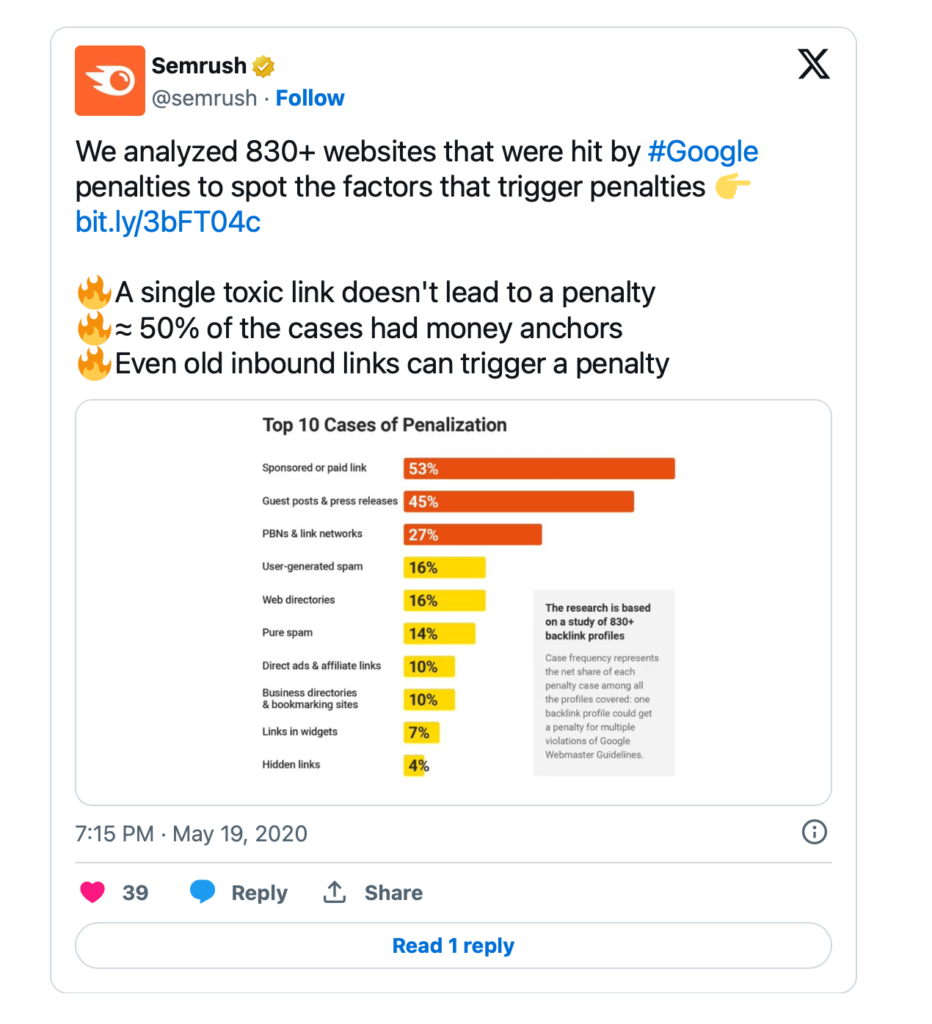
Backlinks play a pivotal role in determining a website’s search engine rankings, and their quality can significantly impact the likelihood of incurring Google penalties.
The composition of backlinks on your website plays a pivotal role in Google’s assessment of its quality and relevance. When your site boasts high-quality, organic backlinks from reputable sources, it signals to Google that your content is both valuable and reliable. On the flip side, the presence of unnatural or manipulative backlinks can result in penalties.
Google views unnatural links, like those acquired through purchases to boost PageRank or those stemming from deceptive practices, as violations of its Webmaster Guidelines. Different attributes of backlinks can influence the risk of incurring penalties, including:
- Link Quality: Endorsements from high-authority and relevant sites contribute positively to your site’s credibility, while links from low-quality, spam-ridden sites can tarnish its reputation.
- Link Relevance: Backlinks should align contextually with your content, and irrelevant links may be interpreted as attempts at manipulation.
- Anchor Text Distribution: Over-optimized anchor text, featuring excessive use of exact-match keywords, may come across as unnatural and manipulative to search engines.
- Link Velocity: The speed at which links are acquired, or any unnatural patterns, can raise suspicions of spam or artificial link-building tactics.
- Link Diversity: A natural link profile encompasses links from diverse sources with different attributes. A lack of diversity may indicate a manipulated profile.
How To Identify A Google Penalty
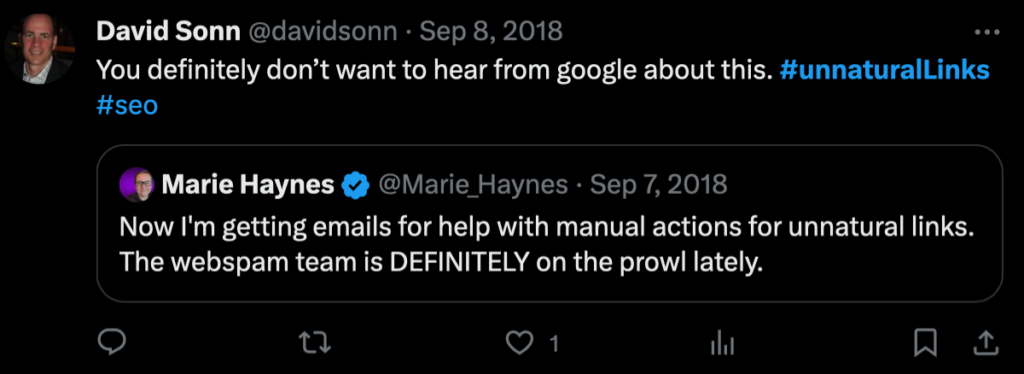
Identifying a Google penalty involves monitoring changes in your website’s search performance. Key indicators include a sudden drop in organic traffic, a decline in search engine rankings, or a notification within Google Search Console. Additionally, manual actions or penalties may be specified in the Search Console, detailing issues like unnatural links or thin content. Let’s take a look at the ways in depth:
Sudden Drops In Traffic
A sudden decline in website traffic often signals a potential Google penalty. This can result from over-optimization or poor content quality. In 2013, Rap Genius experienced a substantial traffic drop due to manipulative link-building practices, prompting swift Google action to address the violation of guidelines.
Decline In Keyword Rankings
A significant drop in keyword rankings serves as a red flag for potential Google penalties. In 2014, Expedia faced penalties for unnatural link schemes, leading to a notable decrease in search rankings. Vigilant keyword monitoring is essential for businesses to promptly detect and address such penalties, ensuring sustained online visibility.
In a notable case from 2006, BMW’s use of doorway pages resulted in a sharp decline in keyword rankings, highlighting the critical importance of monitoring keyword performance to promptly identify and address potential penalties.
Google Search Console Notifications
Google Search Console sends crucial notifications highlighting issues affecting a website’s performance. In 2020, the University of Oxford received warnings regarding unnatural outbound links, underscoring the importance of promptly addressing such notifications to maintain search visibility.Similarly, in 2013, Interflora received warnings from Google Search Console for improper advertorials. These notifications play a vital role in guiding webmasters toward penalty resolution and prevention by pinpointing specific issues that need attention.
Best Tools To Check Google Penalty
Google Analytics
Google Analytics is a robust web analytics tool that offers a comprehensive view of user behavior on your website. It tracks metrics such as page views, bounce rates, and user demographics, providing valuable insights into how visitors interact with your content.
While it doesn’t specialize in SEO, Google Analytics integrates with other Google services, offering a holistic understanding of your website’s performance. For beginners, the abundance of data can be overwhelming, but it remains an essential tool for understanding user engagement and overall website health.
Screaming Frog SEO Spider
Screaming Frog SEO Spider is a powerful desktop tool for in-depth website crawling and SEO analysis. It meticulously scans your website, identifying on-page SEO issues, broken links, and redirects. It remains a go-to choice for SEO professionals seeking a comprehensive view of their website’s technical aspects.
SEMrush Sensor
The SEMrush Sensor assesses the volatility in search results, serving as an indicator of potential algorithm updates by Google. Elevated volatility levels may signal impending changes in your site’s rankings.
MozCast
MozCast functions as a “weather report” reflecting turbulence in the Google algorithm within the past day. The intensity of the “weather” correlates with the extent of changes in Google’s rankings.
Ahrefs Rank Tracker
While not explicitly a penalty detection tool, Ahrefs Rank Tracker monitors your website’s rankings over time. Sudden declines in rankings could raise concerns about a potential penalty, especially if they coincide with known updates.
Panguin Tool
The Panguin Tool overlays your Google Analytics data with documented algorithm updates. This integration allows you to identify if a decline in traffic aligns with a specific update, providing insights into potential penalties.
Woorank
Woorank offers a website analysis tool that quickly provides insights into on-page SEO, usability, and other key factors influencing website performance. Its simplicity allows for a quick and easy website analysis with actionable recommendations.
In addition, you can also use the following platforms and resources to learn about Google penalties and get updates as and when they are announced or detected.
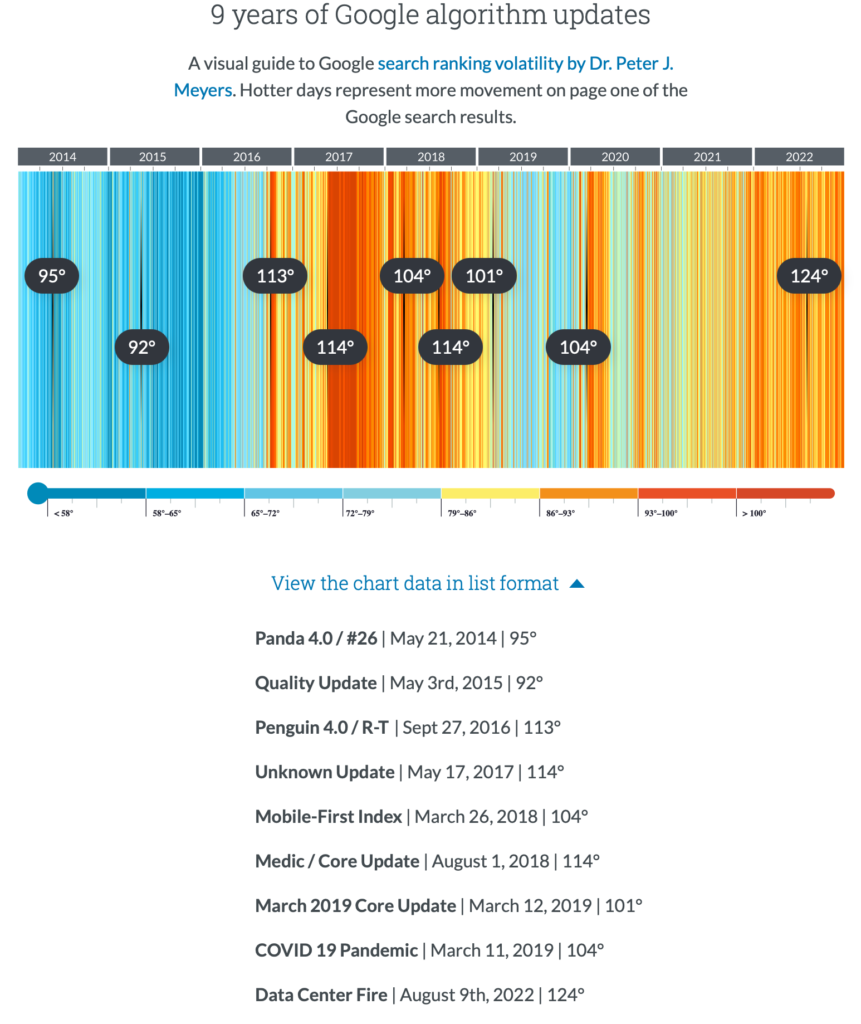
- Google Algorithms History: Exploring the history of Google algorithms and updates on sites like Moz’s Google Algorithm Change History is a great resource to rely upon.
- Google Webmaster Central Blog: The search engine giant often shares updates and insights related to search and penalties on their official blog.You can check this for all the latest updates.
- Search Engine Roundtable: This site aggregates news and discussions from the search engine marketing community, including updates on Google penalties. You can also follow members of the community to get more insights.
- HubSpot Research: HubSpot occasionally releases research reports on various aspects of digital marketing, including SEO trends and penalties. This is a handy tool that can help your cause.
- Digital Marketing Conferences: Insights shared at conferences like MozCon, Pubcon,, BrightonSEO etc., offer valuable information as well.
How to Recover From Google Link Penalties
Recovering from Google link penalties involves a few steps. Google penalizes websites that break its rules, usually when there are unnatural links. If your site gets penalized, you need to act fast to fix it and get back in Google’s good books.
Step 1: Identify the Penalty
Check if the penalty is manual or algorithmic. Manual penalties come with a notification in Google Search Console. Algorithmic penalties are trickier to spot and may need you to look at analytics for sudden drops in traffic linked to known algorithm updates.
Step 2: Conduct a Backlink Audit
Analyze backlinks using tools like Google Search Console, Ahrefs, SEMrush, or Moz. Identify and list any unnatural links.
Step 3: Remove or Disavow Unnatural Links
Try to get rid of as many unnatural links as you can by contacting the site owners. If that’s not possible, use Google’s Disavow Tool to disconnect from the remaining links.
Step 4: Submit a Reconsideration Request
If you get a manual penalty, submit a reconsideration request through Google Search Console after fixing your links. Be honest and detailed in your request.
Step 5: Wait for Google’s Response
After submitting your request, wait for Google to review your site. This can take a few weeks. Keep an eye on your backlinks during this time and handle any new unnatural links.
Step 6: Develop a Clean Link Building Strategy
In the future, focus on getting good, natural backlinks. Avoid any tricky methods that could lead to another penalty.
Step 7: Monitor Your Site’s Health
Regularly check your site’s health using Google Search Console and other SEO tools to make sure you’re on the right track.
Remember, recovering from a Google link penalty takes time, but by paying attention to your site’s backlinks and sticking to Google’s rules, you can bring your site back up in search results.
How To Find And Remove Bad Backlinks
Removing bad backlinks is a time-consuming job, but not when you’ve properly planned and prioritized your actions. Here’s how you can go about it, according to our experts.
Identifying Harmful Backlinks
The primary step in refining your link profile involves pinpointing the backlinks negatively impacting your website’s SEO. Problematic backlinks often originate from low-quality or questionable websites, feature irrelevant anchor text, come from non-Google-indexed sites, or involve paid links transmitting PageRank.
Tools For Recognizing Harmful Backlinks
Various SEO tools are at your disposal to aid in identifying and managing your backlink profile such as Google Search Console, Ahrefs, SEMrush, and Majestic.
Conducting a Backlink Audit
Once equipped with the right tools, execute a comprehensive backlink audit:
- Download a list of your website’s backlinks from Google Search Console and your chosen SEO tool.
- Scrutinize the backlinks to identify any originating from subpar websites or posing potential harm to your site’s reputation.
- Seek patterns indicative of spammy practices, such as sudden spikes in backlinks from irrelevant or low-quality sites.
Removing Problematic Backlinks
Following the identification of harmful backlinks, initiate the removal process:
- Contact the webmasters of the respective sites with a polite request to remove the links, offering clear instructions and specifying the links in question.
- Keep a record of your outreach efforts, noting whom you contacted and when, along with any responses received.
- If removal proves challenging or the site is unresponsive, employ Google’s Disavow Tool to indicate to Google that these links shouldn’t factor into your website assessment.
Preventative Measures
To avert the accumulation of harmful backlinks:
- Regularly monitor your link profile for suspicious activity.
- Use tools that issue alerts upon detecting new backlinks.
- Familiarize yourself with Google’s Webmaster Guidelines and adhere to ethical SEO practices.
By consistently auditing your backlink profile and promptly addressing or disavowing detrimental links, you can uphold a robust SEO standing and shield your website from potential penalties.
Link Building In Post-Penalty Recovery
1. Identify High-Quality Websites
Boost your website’s credibility by targeting high-authority sites. Assess page and domain authority, backlink profiles, and align content with your audience for optimal results. Quality beats quantity in the world of link building.
2. Content Must Be High-Quality
Craft original, relevant, and engaging content. Avoid keyword stuffing, employ visuals, structure with headings, and adhere to SEO best practices. Publishing on authoritative sites boosts credibility, while regular updates keep your content fresh.
3. Backlinks Must Be Relevant
Relevance is key. Backlinks from similar or related content improve search engine rankings, drive referral traffic, and safeguard against penalties. Forge relationships within your niche, engage in guest blogging, and prioritize relevance over quantity.
4. Use Internal Linking Strategies
Guide visitors through your site effectively. Regularly update content, use descriptive anchor text, maintain a hierarchical structure, and avoid overstuffing. Internal linking enhances traffic, engagement, and search engine visibility when executed thoughtfully.
5. Building Relationships
Establish trust, credibility, and authority by networking with influencers, attending events, conducting interviews, and collaborating with other bloggers. Monitoring competitors’ strategies can provide insights for replicating successful approaches.
6. Anchor Text Diversity
Diversify anchor text to maintain a natural link profile. Avoid repetitive or commercial phrases that can be flagged as spam. Striking a balance between descriptive and keyword-rich anchor texts is crucial for effective link building without compromising SEO.
Boost your SEO results! Link building has become fast and easy with Serpzilla. Buy quality backlinks on authority websites with high DR.

Conclusion
Don’t get unnerved when Google penalizes your website for unnatural links. With this comprehensive guide, a robust backlink strategy, and tools like Serpzilla to your rescue, you can win the battle and once again regain the lost traffic.





